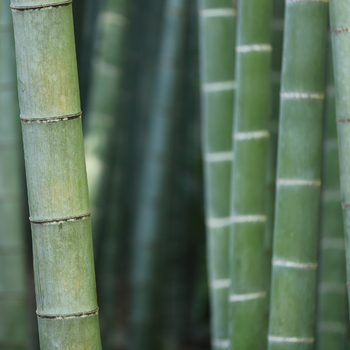THE BENEFITS OF BAMBOO LYCOELL
Bamboo feels soft and is very gentle on the skin. It is also extremely hypoallergenic, which is great for eczema sufferers and those with sensitive skin.


RAW MATERIAL
Bamboo textiles are textiles made from cellulose fibers from the bamboo plant.
THE FABRIC
To produce responsible bamboo fabric, a process with non-toxic solvent must be used to break down the ‘woody’ bamboo pulp. Then, crushed bamboo is soaked in the solvent to produce cellulose. Once the cellulose fiber is made, all of the water and solvent used in the process are filtered out and reused, so the entire process is eco-friendly and done in a closed-loop system.
ENVIRONMENTAL IMPACT
Bamboo can be a very hazardous to the environment as a fabric. Its production can emit poisonous gases and releases chemicals that pollute drinking water, the soil, and the air, This destroys ecosystems, plants, and animals.
Many textile manufacturers use dangerous chemicals and methods to produce bamboo fabrics. Large amounts of water get contaminated during fiber manufacturing.
Thankfully, sustainable production facilities can almost fully reuse water and chemicals with closed-loop processes. When more than 99% of the solvent is recycled, lyocell production is considered eco-friendly.
difference between
bamboo lyocell and bamboo viscose
Viscose uses a process that contains several harmful chemicals. Viscose production is also a water-intensive industry compared to Lyocell (Tencel). However, the Lyocell manufacturing process requires fewer steps than the Viscose yarn one. Ensuring Lyocell is free of harmful chemicals and produced with an efficient closed-loop recycling water system.

